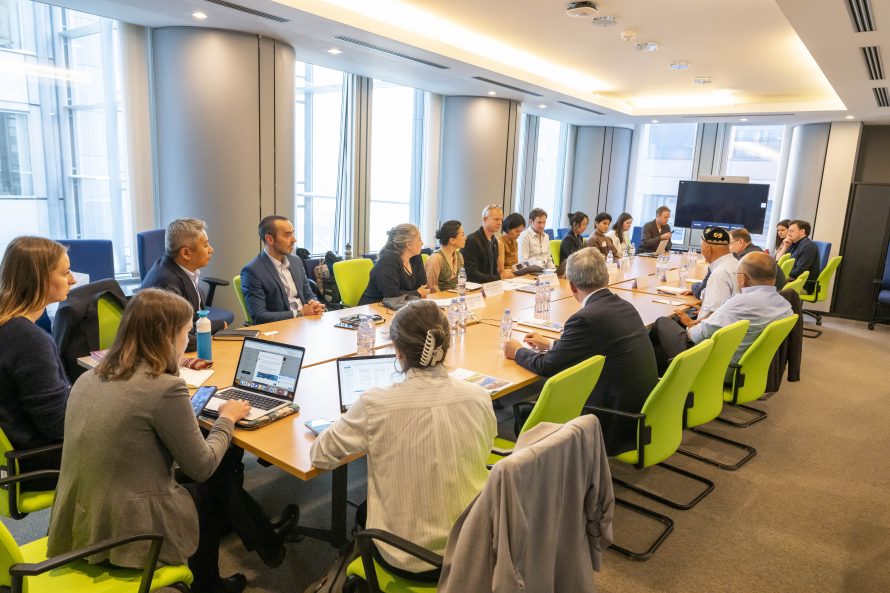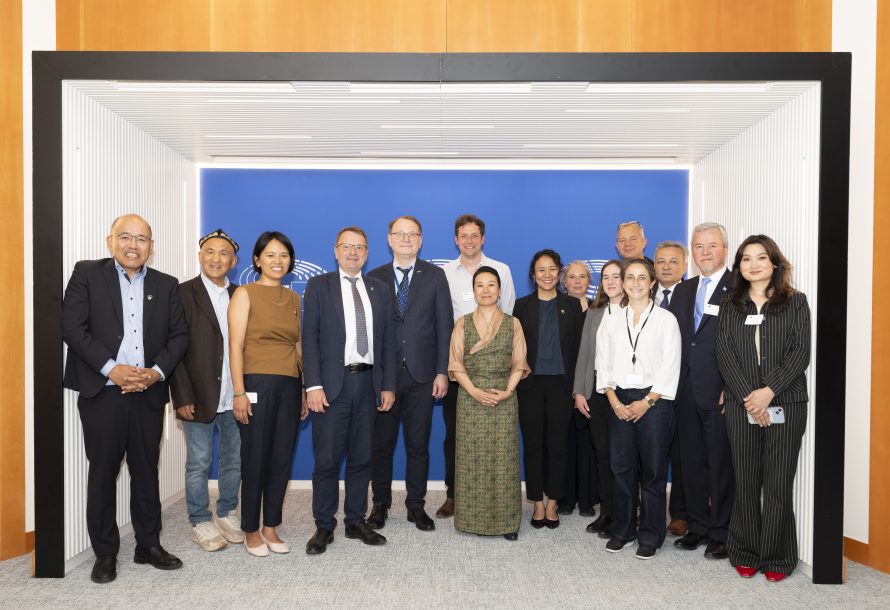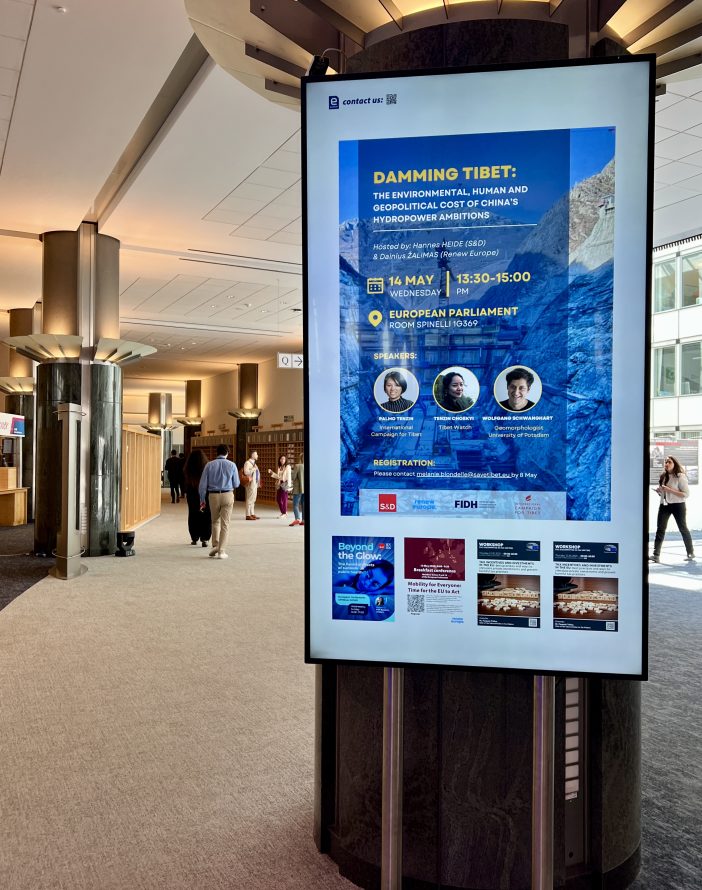
At a conference held at the European Parliament in Brussels on 14 May, EU policymakers, scientists, and human rights experts came together to examine China’s hydropower dams-building spree on the Tibetan Plateau and its serious and far-reaching consequences after being alerted to the issue by the International Campaign for Tibet (ICT).
Co-hosted by Members of the European Parliament Dainius Žalimas and Hannes Heide – respectively Chair and Co-Chair of the European Parliament’s Friends of Tibet group – the event highlighted the urgent need for the EU to pay more attention to the devastating impacts of these dams for Tibetans, Asia and beyond.
“What happens on the roof of the world impacts us all globally, and the European Union cannot remain silent about China’s dams in Tibet,” Mr. Heide (Austria, S&D) insisted in his welcoming remarks to the conference. “Resource extraction in an occupied country that is resulting in abuses of human rights and destruction of the environment is unacceptable. Real sustainability is when projects respect the planet AND the people who live on it.” Mr. Žalimas added.

Palmo Tenzin, Senior Researcher at ICT, opened the panel with an overview of the findings from ICT’s recent report on China’s hydropower dam projects in Tibet. She explained why such projects are not as sustainable as claimed by the Chinese government, and outlined a series of recommendations for international bodies and foreign governments – including the need for the EU to ensure that European companies are not involved in the supply chain of the hydropower construction industry in Tibet.
Tenzin Choekyi, Senior Researcher at Tibet Watch, provided insight on the human, cultural and civilisational costs of China’s unregulated hydropower expansion, sharing video footage from the protests against the Kamtok (Gangtuo) dam in February 2024, which were met with violent repression by Chinese authorities.
For the last presentation, Wolfgang Schwanghart, a geomorphologist at the University of Potsdam with field experience in the Himalayan region, offered a scientific perspective on the environmental risks associated with dam construction in Tibet. He also highlighted the dangers of building large-scale hydropower projects in a highly seismic region, pointing to the January earthquake in Dingri as a stark reminder of the potential consequences. In particular, he raised concerns about the recently approved Medog (Motuo) hydropower project – which experts have described as “the world’s riskiest project” due to its location in a remote, landslide-prone area with frequent earthquakes, limited infrastructure, and high geopolitical tensions between China and India.
In her closing address, Rigzin Genkhang, Representative of the Dalai Lama in Brussels, highlighted the urgent need for environmental bodies to acknowledge the strategic role of the Tibetan Plateau for global climate, and ensure its inclusion in environmental protection frameworks.

“It is clear that, under the pretext of combating climate change, we are perpetuating the mistakes of the past. By developing strategies without guaranteeing civic space, transparency, access to information, public participation, and the rights to freedom of expression and self-determination, we are perpetuating extractivism, uncontrolled environmental impacts, and serious human rights violations,” Gaëlle Dusepulchre, Deputy Director for Business, Human Rights and Environment at FIDH concluded.
Co-organised by ICT and FIDH (International Federation for Human Rights), the event was attended by MEPs or their parliamentary assistants and members of the civil society, including representatives of the Uyghur people, who have faced similar colonialist resource extraction policies.